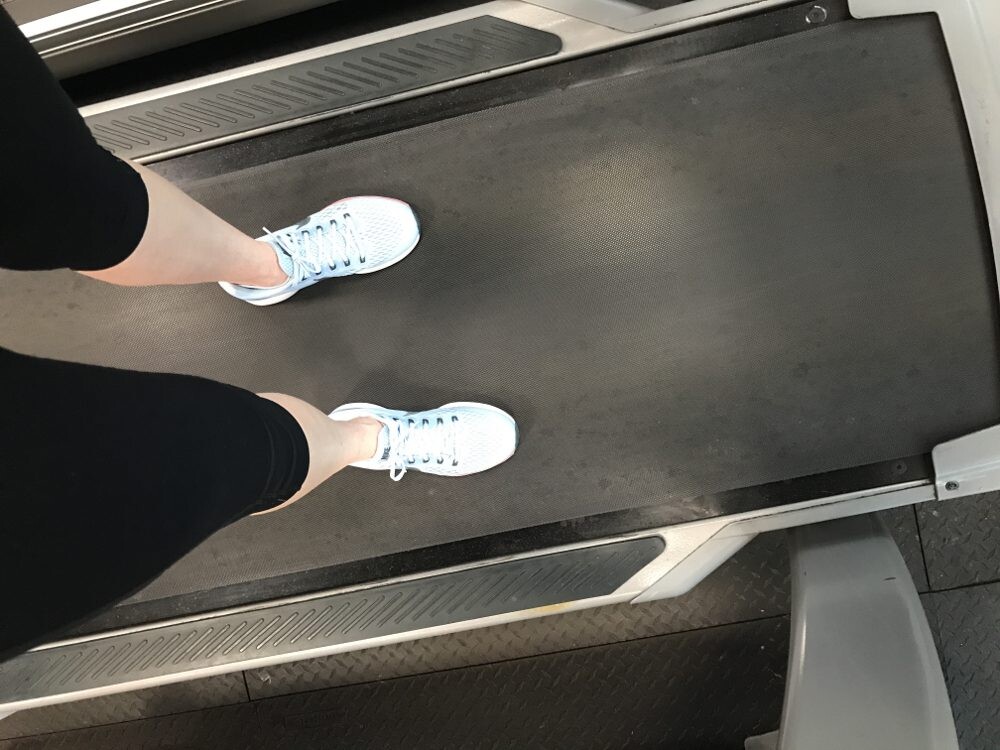Running News Daily
Running News Daily is edited by Bob Anderson. Send your news items to bob@mybestruns.com Advertising opportunities available. Train the Kenyan Way at KATA Kenya and Portugal owned and operated by Bob Anderson. Be sure to catch our movie A Long Run the movie KATA Running Camps and KATA Potato Farms - 31 now open in Kenya! https://kata.ke/
Index to Daily Posts · Sign Up For Updates · Run The World Feed
Eight tips for a successful treadmill run, Follow this advice for an effective and enjoyable indoor ruf
If you’re like the majority of Canadians across the country, your usual running routes are currently covered in snow and ice. The winter weather conditions might have you taking at least some of your runs inside to log your miles on a treadmill, either in your home or at your local gym. If this is the case, keep these eight tips in mind before you begin to make sure your run is safe, effective and (dare we say it) fun.
Don’t skip the warm-up and cool-down

When you run outside, you usually start off a bit slower and spend the first few minutes gradually working your way up to whatever speed you’re planning on running that day. Many runners forget this when hopping on the treadmill, and attempt to crank it up as soon as they start. Don’t forget to take the first five or 10 minutes of your run to increase your speed gradually, and to do the same thing in reverse at the end. Cooling down properly will help bring your heart rate back down to normal so you can avoid that dizzy, still-moving feeling that comes with getting off the treadmill too fast.
Know your pace ahead of time
Most treadmills record your speed in either miles per hour or kilometers per hour, rather than an actual running pace. Make sure you know what those numbers are for you before you go to start your workout, to avoid doing mental math on the fly. For example, 7.5 miles per hour is equivalent to an eight-minute mile or a five-minute kilometer. Click here for a handy conversion chart to know your treadmill speed.
Always run on an incline
When you have the treadmill set to zero, it’s actually the equivalent of running on a slight downhill outdoors. To better simulate a flat road, set the incline to 1-2 per cent. At the same time, be careful not to overdo it and crank up the incline too much (more than seven per cent) for your entire run because it puts a lot of strain on your back, hips and ankles.

You’re better off increasing the incline for brief amounts of time periodically throughout your run, to simulate a hill workout or a run with rolling terrain. After all, it’s rare you’d find yourself in a situation when your entire run is up a steep hill.
Don’t hold the handrail
The handrail is there for safety, not for you to clutch onto for dear life while you’re running. Holding on to the treadmill compromises your running form and can lead to neck, shoulder and back pain. It also reduces your load and actually makes running easier, which may feel good now, but will come back to haunt you when you go running outdoors later.
Handrails on a treadmill are there to help you get on and off safely. If you feel you need to hold onto them when you’re running because you’re afraid of falling off, you’re probably going too fast. Slow your speed down and get comfortable before cranking it up again.
Don’t jump off while it’s moving
On that note, if you need to get off the treadmill in the middle of your run for some reason, don’t try to jump off it while the belt is still whirring away at your running speed. This is one of the main ways people injure themselves when using a treadmill. If you need to pause your workout, slow down the speed to a very reduced pace and bring down the incline before stepping off. If it’s a real emergency, most treadmills have an emergency stop button right in the center that will slow the belt down for you so you can get off safely.
Don’t stare at your feet
Many runners are tempted to look down at their feet when they’re on the treadmill, but trust us — your feet know what they’re doing just the same as when you’re running outside. It’s OK to do a quick feet-check every so often if you feel you’re getting a little too close to the front of the treadmill, but otherwise, look up as you normally would to maintain good running form.
Bring entertainment
There’s a reason why they call it the dreadmill. Running in one place indoors can get boring, so come prepared with a good podcast, your favorite pump-up playlist, or throw on a movie if you’re at home. Whatever you need to pass the time is fair game when you’re taking your run inside.
Try a workout
Treadmill running doesn’t just have to be for your easy days. In fact, when the running conditions aren’t great outside, you’ll probably get more benefit from moving your workout indoors. Without having to deal with slippery, treacherous roads, you’ll actually be able to hit the paces you’re trying to run during a speed work session, but those same conditions will force you to slow down on your easy days, so you can actually recover.
by Brittany Hambleton
Login to leave a comment




